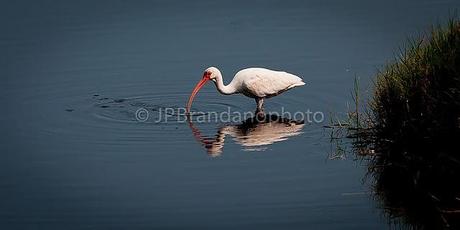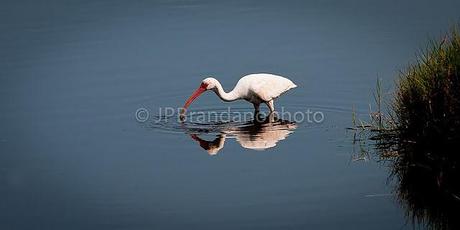According to legend in the Birecik area, the Northern Bald Ibis was one of the first birds that Noah released from the ark as a symbol of fertility. A lingering religious sentiment in Turkey helped the colonies to survive long after the demise of the species in Europe.
(Please remember you can click on each image to see a larger version)
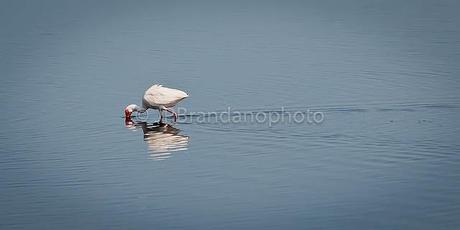
Here in the state of Florida in the USA, the mascot of the University of Miami is an American White Ibis. The ibis was selected as the school's mascot because of its legendary bravery during hurricanes. The ibis is the last sign of wildlife to take shelter before a hurricane hits and the first to reappear once the storm has passed. (We do not have any images of the Sacred Ibis but we do have some of the American White Ibis. If we ever get to visit Egypt, I would really love to see the Sacred Ibis).
In the short time we have lived here, we have gotten use to seeing many beautiful birds right in our own neighborhood; herons, cranes, egrets and spoonbills. The one bird we see the most, pretty much everyday, is the ibis. We will see them in ponds, the sides of roads, in strip malls and in just about any canal. They are really cute birds and from what I can see, not a problem to have around.
They are a mid-sized bird with an overall white plumage, bright red orange down-curved bill and long legs. Their black wing tips are usually only visible during flight. The males are larger than the females. The breeding range of the American Ibis spans along the Gulf and Atlantic Coasts and also along the coasts of Mexico and Central America.
Their diet consists mainly of small aquatic prey such as insects and small fish. Depending on the habitat and the prey abundance, the White Ibis will adjust its diet although studies have found crayfish to be its preferred source of food in most regions.
Being monogamous, the White Ibis has only one mate during the breeding season and both parents care for the young. Ladies, before you give them too much credit, males do tend to engage in extra- pair copulation with other females to increase the reproductive success. I would suspect that is not an excuse that would work really well with humans but I am sure it has been used!!! Males have also been found to pirate food away from unmated females and juveniles during the breeding season. Kind of like human males during the football season!!
What is the biggest threat to the ibis?? You should not be surprised to read it is, wait for it.... humans!!! Have you noticed that seems to a be a recurring theme in nature??? With the increase of methyl mercury being released from untreated waste into various habitats and the ibises consumption of food from those habitats, their hormones are affected. This disrupts their mating and nesting behaviors, leading to lower reproduction rates.

One last interesting fact concerns whether size matters !!!!!!! Guys, it is what we always thought.....it does!!!! At least with ibises and their bills!! A larger bill is important for intraesexual fighting during courtships of females. In addition, a larger bill also allows the males to probe deeper while foraging, thereby increasing foraging effectiveness. God knows we all want to probe deeper!!!
Many times we see them in large groups, all foraging for food in a river, pond or other body of water.
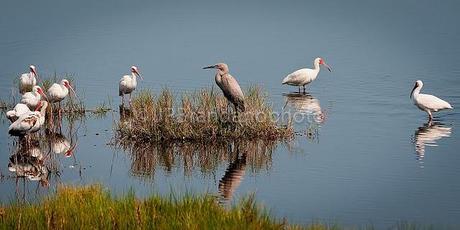
If anyone knows what this large gray bird is, please let me know!! I would be grateful! I am guessing some type of heron?
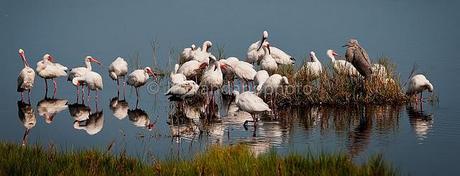
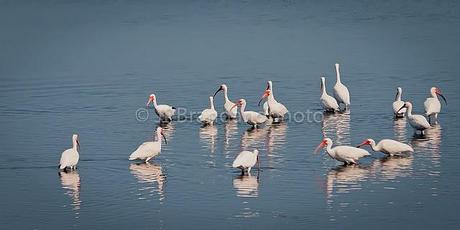
This guy seems like he is well equipped to be a good forager.
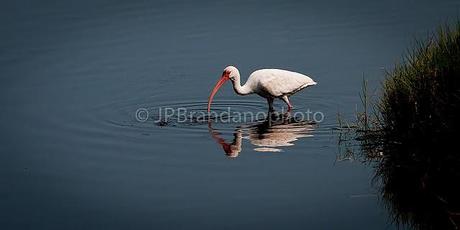
If you click on this image to make it larger you can see a piece of food in his bill!!!

